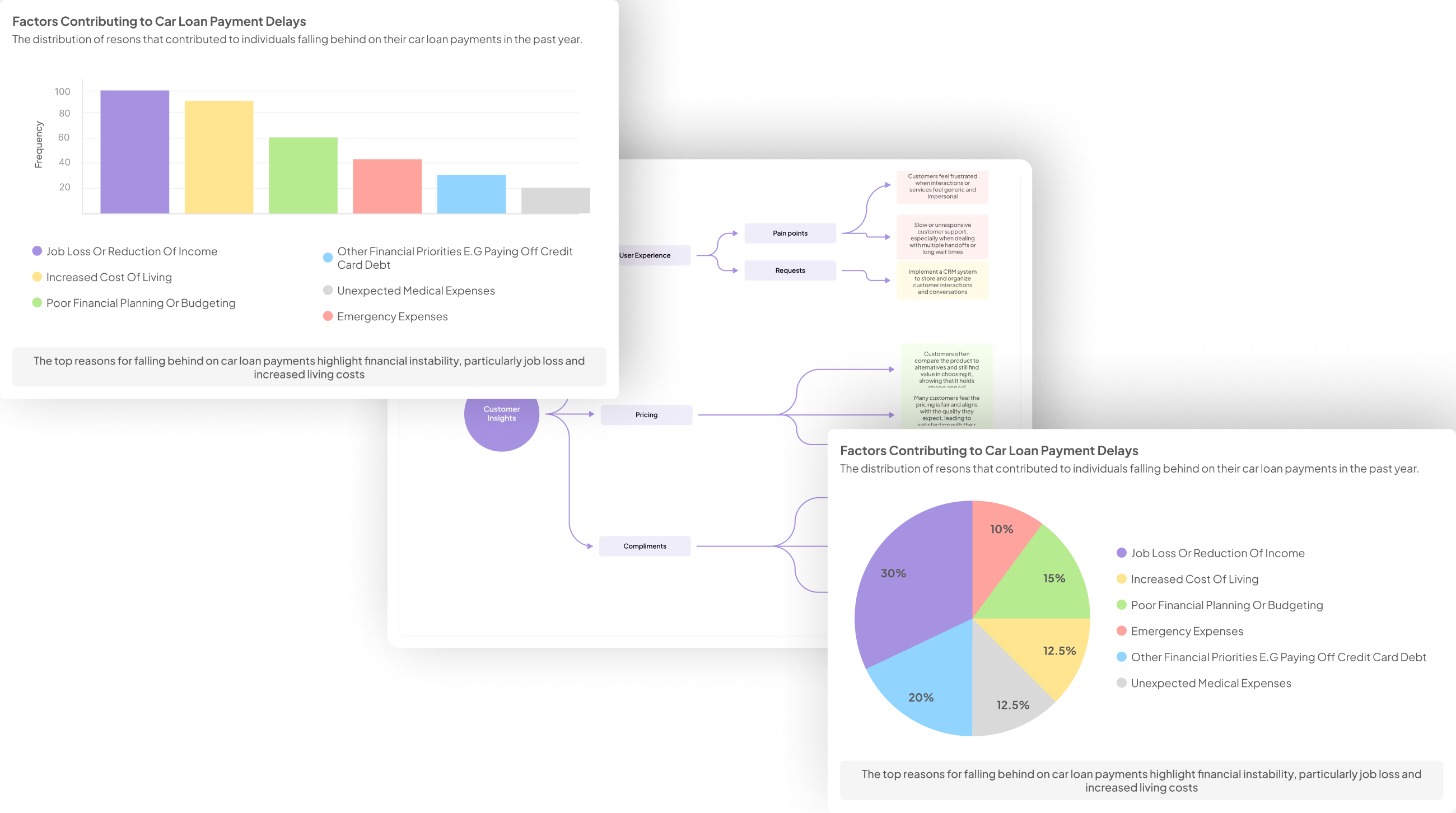How to Analyze Organizational Culture Feedback
-
Bella Williams
- 10 min read
Cultural Feedback Analysis serves as a crucial intersection between an organization’s values and its employee experiences. By understanding what employees feel about the culture, organizations can identify areas for improvement and celebrate successes. This feedback, which encompasses both positive and negative sentiments, provides a comprehensive view of the internal climate and guides necessary adjustments.
In exploring cultural feedback, organizations must focus on the voices that shape their daily interactions. Open dialogues and structured methodologies allow for meaningful insights that reinforce or reshape cultural practices. By prioritizing this analysis, organizations can respond to employee needs, fostering a healthier and more vibrant workplace culture.
Generate visualizations from your qualitative data. At Scale.

The Significance of Cultural Feedback Analysis
Cultural Feedback Analysis plays a crucial role in shaping the environment within any institution. By examining the feedback from various stakeholders, organizations gain insights into their core values and strengths. Through this analysis, it becomes possible to identify areas that need improvement, which is essential for fostering a cohesive workplace culture.
Moreover, this analysis helps gauge employee engagement and morale. Understanding how employees perceive their work environment can lead to enhanced productivity and retention. When employees feel heard, it increases their commitment and satisfaction. Ultimately, Cultural Feedback Analysis is not just about collecting data; it is about transforming that data into actionable insights that drive positive change and align with organizational goals. This ongoing assessment is a vital practice that ensures organizations remain adaptive and resilient in an ever-changing landscape.
Identifying Core Values
Identifying core values is essential for understanding the underlying principles that guide an organization. When conducting cultural feedback analysis, it’s crucial to discern these values, as they shape employee behavior and influence decision-making. Begin by collecting feedback from various sources, including employee surveys, interviews, and focus groups. This diverse input will help reveal consistent themes and beliefs that characterize the organization.
Next, analyze the gathered data to identify common threads relating to the organization’s mission and vision. Look for values that resonate strongly with employees, as these often reflect the culture in action. By clarifying core values, organizations can align their strategies and practices with the authentic sentiments of their workforce. Ultimately, recognizing these core values fosters a stronger connection between employees and the organization, paving the way for improved engagement and performance.
Gauging Employee Engagement
Gauging employee engagement is a vital aspect of understanding organizational culture. It involves measuring how involved and motivated employees feel within their workplace. By capturing insights from both surveys and direct conversations, organizations can identify engagement levels, pinpoint areas for improvement, and foster a culture where employees feel valued.
To effectively gauge employee engagement, consider the following steps:
Conduct Regular Surveys: Anonymous surveys help in gathering honest feedback from employees about their work experience.
Facilitate Focus Groups: Small group discussions can provide deeper insights into employee sentiments and foster dialogue around engagement.
Analyze Direct Feedback: Pay attention to spontaneous comments from employees, whether during meetings or informal conversations, as they can highlight engagement levels.
By implementing these strategies, organizations can gain a clearer understanding of employee engagement, ultimately leading to a more cohesive and productive work environment. Engaging employees consistently enhances morale and retention, reaffirming the organization's commitment to fostering a healthy workplace culture.
Evaluate Performance on Customer Calls for Quality Assurance.
Methods and Tools for Effective Cultural Feedback Analysis
To conduct effective cultural feedback analysis, utilizing diverse methods and tools is essential. First, qualitative analysis techniques such as interviews, focus groups, and open-ended surveys allow for deeper insights into employee perspectives. These methods promote open dialogue, fostering a rich understanding of the underlying sentiments within the organizational culture. Coupled with this, quantitative data collection strategies like structured surveys and metrics-based assessments can yield concrete, measurable feedback. Their structured approach helps in identifying trends and patterns that might not be visible through qualitative methods alone.
Combining both qualitative and quantitative approaches creates a robust feedback analysis framework. Using tools like data visualization software and analytics platforms further enhances the assessment process. These tools facilitate the organization and interpretation of data, making it easier to derive actionable insights. Ultimately, implementing these diverse methodologies promotes a comprehensive cultural feedback analysis, informing strategies that maintain a healthy organizational culture.
Qualitative Analysis Techniques
Qualitative analysis techniques play a crucial role in understanding the nuances of cultural feedback analysis. By focusing on the experiences and perceptions of employees, these techniques provide deeper insights into the organizational culture. Methods such as interviews and focus groups allow for rich, detailed narratives, enabling analysts to uncover underlying themes. This process helps capture the subtleties of employee sentiment, which traditional quantitative methods may overlook.
When conducting qualitative analysis, it is essential to create a structured framework for gathering and interpreting feedback. Coding responses can help identify common patterns, while thematic analysis allows for the organization of findings into broader categories. Engaging in reflective practice throughout this process enhances the quality of insights derived from the feedback. Ultimately, leveraging qualitative techniques enriches cultural feedback analysis, fostering a better understanding of organizational dynamics and leading to effective interventions.
Quantitative Data Collection Strategies
Quantitative data collection strategies are essential for understanding cultural feedback through measurable metrics. This approach involves utilizing structured surveys, questionnaires, and statistical tools to gather reliable data. By employing these methods, organizations can effectively analyze various aspects of their culture and identify trends or patterns that might not be immediately noticeable.
One effective strategy is using Likert scales in surveys to gauge employee sentiments about specific cultural elements. Another is incorporating demographic questions to understand how different groups perceive the culture. Automated data analysis software can also enhance the efficiency of this process, enabling quick interpretation of results. When systematically applied, these quantitative methods provide valuable insights into organizational culture, empowering decision-makers to foster a more positive and aligned work environment.
Conclusion: The Path Forward with Cultural Feedback Analysis
Cultural Feedback Analysis serves as a vital tool for fostering a healthier organizational environment. By consistently collecting and analyzing feedback, organizations can pinpoint areas needing improvement and recognize strengths worth celebrating. Embracing this approach encourages open communication, ultimately leading to greater employee engagement and satisfaction.
Moving forward, integrating Cultural Feedback Analysis into your regular practices is essential. Effective implementation not only allows for the timely identification of emerging challenges but also helps shape a more inclusive culture. By committing to ongoing evaluation and response, organizations can ensure they remain aligned with their core values and objectives, paving the way for sustainable growth and success.







